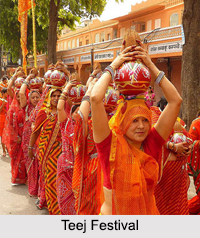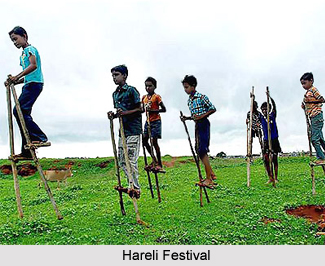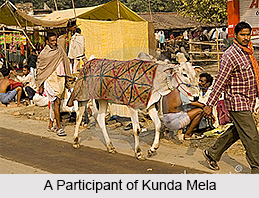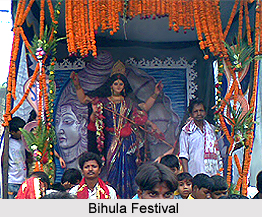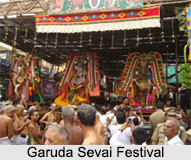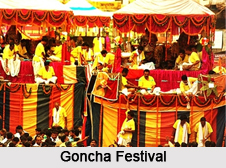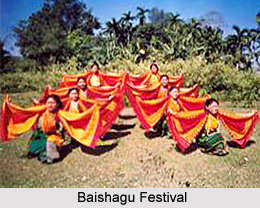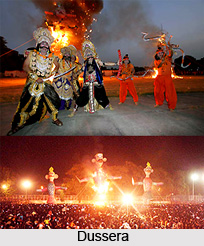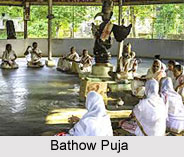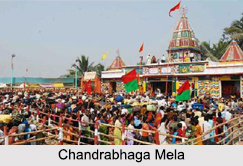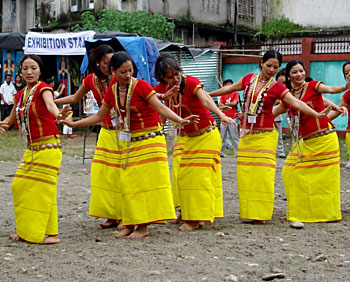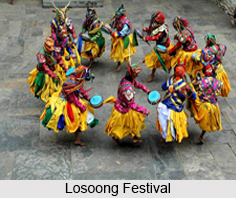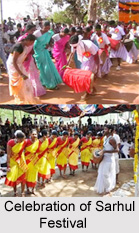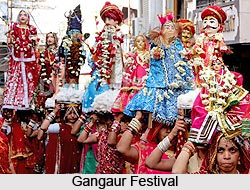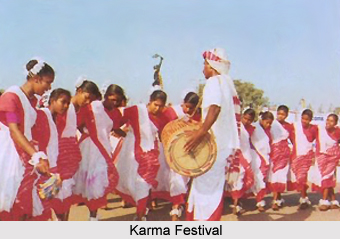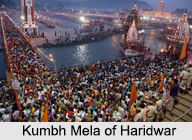 The festival of Kumbh Mela is one of the largest religious peaceful gatherings in the world and shows the unflinching faith of the pilgrims in something sublime. The four fairs which are widely recognized as the Kumbh Melas are held near the banks of a river: the Ganges in Haridwar Kumbh Mela, the Triveni Sangam of the Ganges, Yamuna and the invisible Sarasvati Rivers in Allahabad Kumbh Mela, the Godavari in Nashik- Trimbakeshwar Simhastha and the Shipra in Ujjain Simhastha. It is said that bathing in these rivers can cleanse a person of all their sins.
The festival of Kumbh Mela is one of the largest religious peaceful gatherings in the world and shows the unflinching faith of the pilgrims in something sublime. The four fairs which are widely recognized as the Kumbh Melas are held near the banks of a river: the Ganges in Haridwar Kumbh Mela, the Triveni Sangam of the Ganges, Yamuna and the invisible Sarasvati Rivers in Allahabad Kumbh Mela, the Godavari in Nashik- Trimbakeshwar Simhastha and the Shipra in Ujjain Simhastha. It is said that bathing in these rivers can cleanse a person of all their sins.
The celebration rotates among these 4 places on certain celestial alignment of the traversing planets. The exact date of the festival is determined by the historical Hindu calendar called the Vikram Samvat. It is known that the Kumbh Mela is held once in 12 years. But there is a difference of around 3 years between the Kumbh Melas at Haridwar and Nashik; the fairs at Nashik and Ujjain are celebrated in the same year or one year apart.
Origin of Kumbh Mela
According to the Vedic scriptures of the Bhagavad Purana, the origin of the Kumbh Mela can be found in the ancient legend of Samudra Manthan. The legend elaborates a battle between the asuras and devas for procuring the drink of immortality called amrita, which was eventually produced after churning the cosmic ocean and was placed in a kumbha or a pot. To prevent the asuras from seizing the nectar of immortality, a divine carrier flew away with the pot. In one version of the legend, the carrier of the kumbha is the divine physician Dhanvantari, who stops at 4 places where the Kumbh Mela is celebrated. In the other versions, the carrier is Garuda, Indra or Mohini, who spills the divine drink at 4 places. Thus, these places have some mystical divine attributes to it.
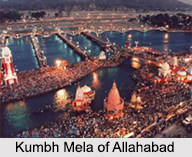 History of Kumbh Mela
History of Kumbh Mela
The site of the original Kumbh Mela is in Haridwar, since there are several references to a 12-year cycle for it and is held according to the astrological sign Kumbha, also known as Aquarius. Indo-Persian texts called the Khulasat ut-Tawarikh and Chahar Gulshan have both used the term Kumbh Mela to describe only Haridwar`s fair, although they mention the similar fairs held in Allahabad and Nashik district. The Magh Mela of Allahabad is probably the oldest among these, dating from the early centuries CE, and has been mentioned in several Puranas. The first British reference to the Kumbh Mela in Allahabad occurs only in an 1868 report, which mentions the need for increased pilgrimage and sanitation controls at the "Coomb fair" to be held in January 1870. Until the rule of the East India Company, the Kumbh Melas were managed by the sects of the religious ascetics known as sadhus. The Melas were a scene of sectarian politics, which sometimes turned violent
Historically, the Kumbh Melas were also major commercial events and was attended by people from a number of races and religion. The Kumbh Melas also played an important role in spread of the cholera outbreaks and pandemics. The British administrators made several attempts to improve the sanitary conditions at the Melas, but thousands of people died of cholera at these fairs until the mid-20th century. The Melas are also no stranger to stampedes, the first major stampede was experienced in Haridwar in 1820 and the next big one happened in the year 1986. Allahabad has also experienced major stampedes, in 1840, 1906, 1954, 1986 and 2013. The deadliest of these was the 1954 stampede, which left 800 people dead.
Places for Kumbh Mela
The 4 religious places for the mela are elaborated below.
Haridwar Kumbh Mela: The city of Haridwar is one of the most sacred cities in India. The place has an enormous religious significance and is known to be a key pilgrimage town for the Hindus. Haridwar or Hardwar is located on the foothills of the Shivaliks of the Himalayan Range in the state of Uttarakhand. In ancient scriptures, Haridwar was also known as Mokshadwar. Kumbh Mela is held in this city when the Jupiter enters in the zodiac sign Aquarius or Kumbh and the Sun and Moon in Aries and Sagittarius respectively The last Kumbh Mela was celebrated in Haridwar from Makar Sankranti to Shakh Pournima Snan which was from 14th January to 28th April, 2010. The next Kumbh Mela will be held in Haridwar in the year 2022.
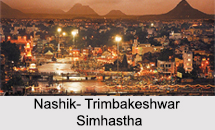 Allahabad Kumbh Mela: Allahabad is built on a very ancient site of the Aryans formerly known as Prayagraj. It is located at the confluence of the holy rivers Ganga and the Yamuna and the Saraswati Rivers. When Jupiter is in Taurus also known as Vrishabha and the Sun and Moon are in Capricorn or Makra, the Kumbh is held at Prayagraj (Allahabad) on the vast ground of Sangam i.e. confluence of Rivers Ganges, Yamuna and the invisible Saraswati, attracting millions of Hindu devotees. It is the largest Kumbh in terms of number of sadhus and devotees. It is the holiest of all melas and is believed to be the most auspicious. The 2019 Kumbh Mela will be held here and will take place for approximately 55 days, spreading over an area of 1000 hectares around the sangam area.
Allahabad Kumbh Mela: Allahabad is built on a very ancient site of the Aryans formerly known as Prayagraj. It is located at the confluence of the holy rivers Ganga and the Yamuna and the Saraswati Rivers. When Jupiter is in Taurus also known as Vrishabha and the Sun and Moon are in Capricorn or Makra, the Kumbh is held at Prayagraj (Allahabad) on the vast ground of Sangam i.e. confluence of Rivers Ganges, Yamuna and the invisible Saraswati, attracting millions of Hindu devotees. It is the largest Kumbh in terms of number of sadhus and devotees. It is the holiest of all melas and is believed to be the most auspicious. The 2019 Kumbh Mela will be held here and will take place for approximately 55 days, spreading over an area of 1000 hectares around the sangam area.
Nashik- Trimbakeshwar Simhastha: Trimbakeshwar is the abode of one of the 12 Jyotirlingas. It is situated at the foothills of the Bramhagiri hills of the Sahyadri ranges about 30 kms away from Nashik. The sacred Godavari River originates from these hills. When the Jupiter enters into the zodiac sign Simha or Leo and the Sun and Moon in Cancer on lunar conjunction or Amavasya, Simhastha Kumbh Mela is held at Nashik- Trimbakeshwar after every 12 years. Until the year 1789, the fair was held only at Trimbak, but after a clash between Vaishnavites and Shaivites, the Maratha Peshwa segregated the Vaishnavites to the Nashik city.
Ujjain Simhastha: Ujjain is also known as Avantika, Avantikapuri is an ancient city situated on the eastern bank of Shipra River in Madhya Pradesh. It is also home to the Mahakaleswar Jyotirlinga which means the "city of victory", earlier known as Ujjayini and is located on the western boundary of Madhya Pradesh. Ujjain is known to be one of the holiest cities in India. When Jupiter is in Leo or the Simha and the Sun and Moon is in Aries, Kumbh Mela is held at Ujjain.
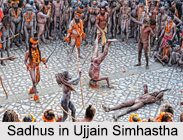 Kumbh Mela of 2019
Kumbh Mela of 2019
The 2019, Kumbh Mela will be held in Prayagraj also known as Allahabad. Here, the mela is very different as compared to Kumbh at other places due to many reasons. Firstly, the tradition of long-term Kalpvas is practised only in Prayag. Secondly, the Triveni Sangam is considered to be the centre of the earth in few ancient scriptures. Thirdly, Lord Brahma performed the Yajna here for creating the universe. And lastly, Prayagraj is called the shrine of pilgrimages, but the most important reason is that the significance of performing rituals and tapas at Prayagraj is of highest among all pilgrimages and provides one with the highest virtue.
For the Kumbh 2019, modern technologies are being deployed to enhance the Divyata and Bhavyata of the Kumbh. Gates based on various themes will welcome pilgrims and information boards will guide them to their destination. Huge pandals and tents will facilitate the stay of pilgrims and visitors.
